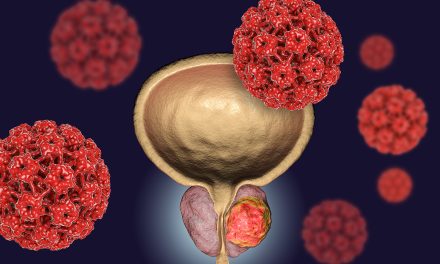
Determining the best treatment for prostate cancer depends on a variety of factors, including the stage of the cancer, how quickly it is growing, and the patient’s overall health and personal preferences. Standard treatment options for prostate cancer include surgical removal of the prostate, radiation therapy, hormone therapy, and chemotherapy. Addressing prostate cancer with effective treatment is crucial, but it is also essential to consider the potential side effects which can include urinary incontinence and sexual dysfunction.
For those diagnosed with low-risk prostate cancer, an approach called active surveillance may be adopted. This strategy involves carefully monitoring the cancer without immediate treatment, which can help avoid the side effects that often accompany more aggressive treatments. Patients and healthcare providers may opt for intervention if signs indicate that the cancer is progressing. Information regarding the different strategies for managing prostate cancer can guide how to treat this complex condition.
Understanding Prostate Cancer
Prostate cancer develops when cells in the prostate gland grow uncontrollably. Recognizing the nature of this cancer, its origin, and its progression is crucial for effective treatment strategies.
Defining Prostate Cancer
Prostate cancer is a disease marked by the malignant growth of cells within the prostate, a gland in the male reproductive system. These cancerous cells mutate at the DNA level, which leads them to grow and divide more rapidly than normal cells.
The Role of the Prostate
The prostate’s primary function is to secrete prostate fluid, one of the components of semen. It plays a vital role in male fertility. The proximity of the prostate to the rectum allows for diagnosis through a Digital Rectal Exam (DRE), where a doctor may feel for abnormalities.
Stages of Prostate Cancer
The stages of prostate cancer range from Stage I to Stage IV. Each stage signifies the extent of the tumor spread, with Stage I indicating the cancer is confined to the prostate and Stage IV, meaning it has spread to other parts of the body. These stages are further classified by Grade Group—a system to describe the aggressiveness of the cancer cells based on their appearance and how quickly it’s likely to grow and spread.
Risk Factors and Prevention
Understanding the risk factors associated with prostate cancer helps one take proactive measures for its prevention and early detection. Screening tests are the cornerstone in identifying prostate cancer at an early, treatable stage.
Common Risk Factors
Certain factors increase a man’s risk of developing prostate cancer. Age is a significant risk factor; men over 50 are at an increased risk, and the probability continues to rise rapidly with age. Additionally, men should be aware of their genetic history, as having a family member with prostate cancer history might signal a higher risk. Other lifestyle-related factors like diet and exercise also play a role—engaging in regular exercise may help lower the risk.
Screening and Early Detection
Regular screening is vital for early detection of prostate cancer. Two standard methods are the PSA test (Prostate-Specific Antigen) and the digital rectal exam (DRE). The PSA test measures the level of PSA in the blood, which can be higher in men with prostate cancer. The DRE involves a physician manually checking the prostate gland for abnormalities. Men are encouraged to consult with their healthcare provider about when they should begin screenings and the frequency based on their individual risk factors.
Symptoms and Diagnosis
Prostate cancer diagnosis relies on recognizing symptoms and employing specific tests to determine the presence and extent of the disease. Physicians assess symptoms alongside diagnostic testing to confirm a diagnosis and establish a treatment plan.
Identifying Symptoms
Early prostate cancer may not cause noticeable symptoms. However, as cancer progresses, one might experience signs such as:
- Trouble urinating
- Decreased force in the urine stream
- Blood in the urine or semen
- Bone pain
- Weight loss without trying
- Erectile dysfunction
Should these symptoms arise, it’s crucial to consult a healthcare provider for evaluation.
Diagnostic Testing
The initial step in diagnostic testing often involves a Digital Rectal Exam (DRE), where a doctor feels the prostate through the rectum for any abnormalities. If suspicions are confirmed, the Prostate-Specific Antigen (PSA) blood test is administered to measure PSA levels, which are often higher in men with prostate cancer.
Depending on the PSA results, further diagnostic methods may include:
- Biopsy: Tissue samples are taken from the prostate to identify cancerous cells.
- MRI: This imaging technique provides a detailed picture of the prostate and surrounding areas.
- Transrectal Ultrasound: An ultrasound probe is inserted into the rectum to create images of the prostate gland.
Understanding the Gleason Score
After a biopsy confirms the presence of cancer, the Gleason Score is used to grade the aggressiveness of the cancer cells. This score ranges from 2 to 10 and helps gauge how quickly the cancer is likely to grow and spread. The grading is as follows:
- Gleason Score 6 or less: Low-grade cancer
- Gleason Score 7: Intermediate-grade cancer
- Gleason Score 8 to 10: High-grade cancer
Understanding the Gleason Score is essential for developing a suitable treatment strategy.
Treatment Options
Prostate cancer treatment should be tailored to the individual, considering factors such as the stage of cancer, overall health, and personal preferences. This section explores the various treatment options available, from conservative measures to aggressive therapies.
Active Surveillance and Watchful Waiting
For prostate cancer that is considered low risk, active surveillance involves regular monitoring of cancer’s presence and growth, without immediate invasive treatment. This might include regular PSA testing and sometimes biopsies. Watchful waiting is less intensive monitoring without periodic biopsies and is often considered for older men with other health issues.
Surgery Options
Radiation Therapy Options
Radiation therapy, including external beam radiation and brachytherapy (where radiation seeds are implanted into the prostate), targets cancer cells while sparing healthy tissue. More advanced options like proton beam radiation deliver higher doses of radiation with potentially fewer side effects.
Drug Therapies
Various drug therapies exist, such as:
- Hormone therapy, also called androgen deprivation therapy, which reduces the levels of hormones that can promote cancer cell growth.
- Chemotherapy, which uses drugs to kill rapidly dividing cells, is typically reserved for cancer that has spread outside the prostate.
- Cryotherapy, focal therapy, and high-intensity focused ultrasound (HIFU) are other therapies that aim to destroy prostate cancer cells by freezing or with high-frequency sound waves.
- Immunotherapy strengthens the immune system’s ability to attack cancer cells.
Each treatment has potential risks and benefits, and decisions should be made in partnership with healthcare professionals.
Advancements in Treatment

The landscape of prostate cancer treatment has been transformed by the introduction of high-precision techniques and forward-thinking clinical trials. These advancements aid in providing patients with more effective and targeted options, leading to improved outcomes.
High-Tech Procedures and Imaging
In the arsenal of high-tech treatments, prostatectomy has evolved into a more sophisticated procedure when paired with real-time imaging technologies. The use of advanced MRI and ultrasound during surgeries increases the precision of tumor targeting and helps to preserve surrounding healthy tissue. Additionally, the development of radiopharmaceuticals has provided a new avenue of treatment. These substances deliver radioactive particles directly to cancer cells, minimizing damage to healthy cells.
Clinical trials are continually pursuing advancements in imaging techniques to enhance the early detection and staging of prostate cancer. These trials, often listed on platforms like clinicaltrials.gov, explore the utilization of cutting-edge imaging technology to improve diagnosis and treatment planning.
Future of Prostate Cancer Treatment
The horizon of prostate cancer treatment includes promising clinical trials that explore everything from next-generation radiopharmaceuticals to potential prostate cancer vaccines. These vaccines aim to train the immune system to identify better and combat cancer cells. Bisphosphonate therapy, on the other hand, is being investigated for its potential to mitigate bone-related complications of advanced prostate cancer.
The focus is not only on curing the disease but also on enhancing the quality of life for survivors. As these and other treatments pass through rigorous clinical trials, they hold the potential to redefine standard care for prostate cancer patients.
Considerations for Quality of Life

When considering treatment options for prostate cancer, it’s crucial to take into account the potential impact on quality of life, which can be affected by various side effects. These considerations play a significant role in deciding how to approach treatment, as they can affect everyday well-being, both physically and psychologically.
Dealing with Side Effects
Prostate cancer treatments often lead to a range of side effects that can significantly impact a patient’s life. These may include fatigue, pain, and emotional distress. It’s essential for patients to openly communicate with their healthcare providers about side effects to manage them effectively. The use of complementary and alternative medicine may relieve some individuals, and management strategies often involve a combination of prescription medications, lifestyle adjustments, and sometimes, supplements or vitamins specifically tailored to address the patient’s symptoms.
Sexual and Urinary Health
Bladder control issues are another critical quality of life concern. Urinary incontinence varies in severity and type, ranging from stress incontinence to urge incontinence, and can be mitigated through pelvic floor exercises, medications, or surgical procedures. Additionally, testosterone levels might be affected by treatment, but hormone therapy may offer solutions for some patients experiencing significant hormonal imbalances. It is essential that patients are evaluated individually and that treatment plans are personalized to optimize their overall quality of life.
Emotional and Social Support

When facing prostate cancer, emotional and social support are critical components of the healing process. They provide psychological strength and can help manage the stress associated with treatment and recovery. Patients are encouraged to explore various mental health resources and to build a supportive network that aligns with their personal preferences to ensure comprehensive supportive care.
Mental Health Resources
Individuals diagnosed with prostate cancer may experience a range of emotions that can affect their mental health. Organizations like the American Cancer Society offer guidance on coping mechanisms and mental health support for patients and their families. It is crucial to acknowledge and address any feelings of anxiety, depression, or fear through professional support services. Additionally, websites like Cancer.Net provide valuable information on coping with the physical side effects of treatment, which in turn can benefit mental wellness.
- Consulting a mental health professional is advised to help navigate the emotional challenges.
- Utilizing online support groups can connect patients with others experiencing similar challenges.
- Therapy options may include individual counseling or group sessions, which can be sourced through hospital networks such as the Mayo Clinic.
Building a Support Network
A robust support network is fundamental for those undergoing prostate cancer treatment. This network can include friends, family, healthcare professionals, and peer support groups. The Prostate Cancer Foundation emphasizes maintaining relationships and seeking social support through community resources or local support groups.
- Family and friends can provide emotional strength and practical help.
- Support groups facilitate shared experiences and coping strategies.
- Attending community events can encourage social engagement and provide a sense of normalcy.
Prognosis and Aftercare

The prognosis for prostate cancer varies, heavily influenced by one’s overall health, stage of cancer at diagnosis, and treatment choices. Regular follow-up and long-term management are crucial for those who are part of the high-risk group or have elevated PSA levels.
Long-Term Management
Prostate cancer long-term management often involves consistent observation to monitor the patient’s PSA level. This approach, often termed “watchful waiting” or “active surveillance,” is particularly suitable for forms of prostate cancer that are slow-growing and may not need immediate treatment. For those within high-risk groups—those with aggressive cancer types or higher PSA levels—long-term management may consist of ongoing treatments, such as radiation therapy, hormone therapy, or chemotherapy.
Follow-Up Care
After initial treatment, follow-up care is tailored to the individual’s needs. Regular check-ups include:
- PSA tests: to detect any changes in PSA levels that may indicate recurrence.
- Digital rectal exams (DRE): to check for physical changes in the prostate.
These follow-up appointments are a cornerstone in prostate cancer aftercare, providing continuous assessment of the patient’s health and enabling timely intervention if cancer returns or progresses.
Navigating Health Care Systems

When a patient is diagnosed with prostate cancer, it is essential for them to understand how to navigate health care systems effectively. This includes how to interact with medical professionals and comprehend the costs associated with treatment.
Interacting with Professionals
The patient should expect to engage with a variety of healthcare professionals, including a pathologist who plays a crucial role in diagnosing prostate cancer by examining tissue samples. It’s important for the patient to communicate their personal preferences and concerns with their medical team, ensuring that their treatment plan aligns with their values and life circumstances. This direct interaction is key to obtaining a clear understanding of their health status and the therapeutic options available to them.
Understanding Treatment Costs
Treatment costs can vary significantly depending on the stage of cancer and the treatment strategy adopted. Patients should consult with their insurance provider to understand what expenses are covered and to what extent. Resources provided by organizations like the National Cancer Institute can be beneficial for comprehensive financial guidance. They offer tools and advice for tracking medical expenses, helping patients make informed decisions about their care without the burden of unexpected costs.
Patient Empowerment Through Education

Educating oneself about prostate cancer is a crucial step in patient empowerment. When patients are knowledgeable, they possess the tools needed to make informed decisions about their health. Educational resources from reputable sources such as the American Cancer Society provide valuable information regarding symptoms, treatment options, and supportive care.
Patients should take advantage of the information available online and through healthcare providers. Mayo Clinic is another authoritative source patients can trust for accurate, up-to-date information on prostate cancer.
Aspects of patient education include:
- Understanding the diagnosis and possible treatments
- Recognizing the progression and potential complications of the disease
- Learning about the benefits and side effects of various treatments
By being educated:
- Patients gain control over their treatment choices.
- They can engage in meaningful discussions with their healthcare providers.
- They become proactive in managing their health and well-being.
Support groups and clinical trials are also an integral part of patient education. For example, one might engage in discussions with others on similar paths or consider enrollment in clinical trials to contribute to advancements in prostate cancer treatments.
In conclusion, patient empowerment through education is a vital process that involves gaining knowledge and using that information to participate in healthcare decisions actively.
Frequently Asked Questions
In this section, we’ll navigate through some of the most common questions regarding prostate cancer treatments, the progression of the disease, and the potential for recovery.

What are the leading treatments currently available for prostate cancer?
The leading treatments for prostate cancer include surgery, radiation therapy, hormone therapy, chemotherapy, and targeted therapy. Treatment decisions depend on many factors, including the stage and aggressiveness of the cancer, potential side effects, and the patient’s health and preferences.
Which treatment is advisable for early-stage prostate cancer patients?
For early-stage prostate cancer, options include active surveillance, surgery (radical prostatectomy), and radiation therapy. Active surveillance is often chosen when the cancer is considered low risk and may not affect a person’s life expectancy.
Can you outline the stages of prostate cancer development?
Prostate cancer development is categorized from Stage I, where the cancer is small and contained within the prostate gland, to Stage IV, where the cancer has spread to other parts of the body. Understanding the stages helps in planning treatment and assessing prognosis.
What surgical options are there for treating prostate cancer?
Surgical options for prostate cancer include radical prostatectomy, which can be conducted using open surgery, laparoscopic, or robotic-assisted techniques. Surgical treatment aims to remove the prostate gland and some surrounding tissue, potentially curing localized cancer.
Is there a possibility of complete recovery from prostate cancer?
The possibility of complete recovery, or remission, from prostate cancer depends on various factors, such as the stage at diagnosis, the aggressiveness of the tumor, and the effectiveness of treatment. Early detection typically offers a better prognosis.
How do supportive therapies complement other treatments for prostate cancer?
Supportive therapies, such as pain management, nutrition therapy, and emotional support, play a crucial role in improving quality of life and managing symptoms or side effects during and after prostate cancer treatment. These therapies can help patients maintain strength and cope with the challenges of cancer treatment.















